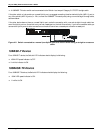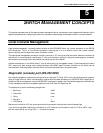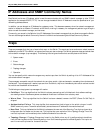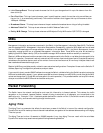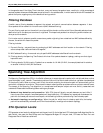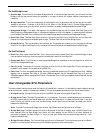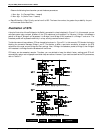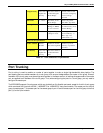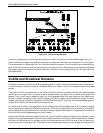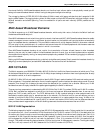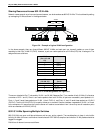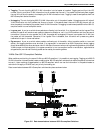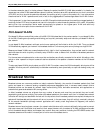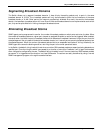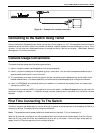
24-port NWay Ethernet Switch User’s Guide
Switch Management Concepts 21
Figure 5-3. Port trunking example
The switch treats all ports in a trunk group as a single port. As such, trunk ports will not be blocked by Spanning Tree.
Data transmitted to a specific host (destination address) will always be transmitted over the same port in a trunk group.
This allows packets in a data stream to arrive in the same order they were sent. A trunk connection can be made with any
other switch that maintains host-to-host data streams over a single trunk port. Switches that use a load-balancing scheme
that sends the packets of a host-to-host data stream over multiple trunk ports cannot have a trunk connection with the
DES-3225G switch.
VLANs and Broadcast Domains
VLANs are a collection of users or switch ports grouped together in a secure, autonomous broadcast and multicast domain.
The main purpose of setting up VLANs or a broadcast domain on a network is to limit the range and effects of broadcast
packets.
Two types of VLANs are implemented on the Switch: 802.1Q VLANs and port-based VLANs. MAC-based broadcast
domains are a third option. Only one type of VLAN or broadcast domain can be active on the Switch at any given time,
however. Thus, you will need to choose the type of VLAN or broadcast domain you wish to setup on your network and
configure the Switch accordingly. 802.1Q VLANs support IEEE 802.1Q tagging, which enables them to span the entire
network (assuming all switches on the network are IEEE 802.1Q-compliant). In contrast, MAC-based broadcast domains
are limited to the Switch and devices directly connected to them.
All VLANs allow a network to be segmented in order to reduce the size of broadcast domains. All broadcast, multicast,
and unknown packets entering the Switch on a particular VLAN will only be forwarded to the stations or ports (802.1Q
and port-based) that are members of that VLAN. 802.1Q and port-based VLANs also limit unicast packets to members of
the VLAN, thus providing a degree of security to your network.
Another benefit of 802.1Q and port-based VLANs is that you can change the network topology without physically moving
stations or changing cable connections. Stations can be ‘moved’ to another VLAN and thus communicate with its members
and share its resources, simply by changing the port VLAN settings from one VLAN (the sales VLAN, for example) to
another VLAN (the marketing VLAN). This allows VLANs to accommodate network moves, changes and additions with



